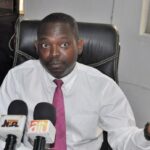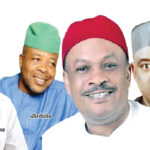
The Executive Chairman, Edo State Universal Basic Education Board, Ozavize Salami, tells ADEYINKA ADEDIPE, the government’s response to the allegations by a civil society organisation on the state of schools in the state
What do you make of the call by the Country Director, Coalition for Good Governance and Economic Justice in Africa, John Mayaki, inviting the World Bank to tour schools in Edo as he alleged that schools in the state were in a deplorable condition?
It’s important to clarify a few points. First, there is no need to invite the World Bank for a tour of Edo schools. Edo is part of the World Bank’s Programme for Results, known as P4R, which entails regular visits by the World Bank, without any special invitation. So, there are statutory arrangements in place for the World Bank to visit the state annually, including its schools in rural and urban areas. The initiative is to improve educational outcomes and foundational learning. It is worth noting that Edo’s participation in the accelerated learning programme has yielded positive results. There has been a verifiable and significant improvement in foundational literacy and numeracy, which has been acknowledged not only by supporters but also by strong critics of the programme. This progress underscores the effectiveness of the collaborative efforts between the government and the World Bank in addressing educational challenges in Edo State.
What is the state of the initiative in Edo schools?
Edo is one of the states in Nigeria that actively participates in the programme, which aims to promote effective governance and deliver tangible results in key sectors such as education. As part of the programme, the World Bank provides technical and financial support to assist the state in implementing reforms and achieving specific targets in the education sector. One of the key components of this partnership is the focus on improving foundational learning through initiatives like the accelerated learning programme. The objective is to provide a solid educational foundation for students and enhance their overall academic performance.
Could you expatiate on the annual visit by the World Bank, which you mentioned earlier?
Under the P4R framework, the World Bank conducts regular visits to Edo State, including its schools in both rural and urban areas. These visits serve multiple purposes. They provide an opportunity for the World Bank to assess the progress made in implementing the programme’s objectives, monitor the utilisation of funds and ensure transparency and accountability in the education sector. Moreover, these visits also facilitate knowledge exchange and capacity building. The World Bank experts engage with education stakeholders in Edo, including government officials, educators and community members to share best practices, provide technical advice and offer guidance on effective implementation strategies. This collaborative approach helps to strengthen the capacity of the state government and local education authorities in delivering quality education and sustaining positive outcomes. It is important to highlight that Edo’s participation in P4R has yielded substantial results. Overall, the relationship between Edo and the World Bank is built on a mutual commitment to improve education and achieve sustainable development goals.
What is the true position of the $75m facility given to Edo State in 2020?
The World Bank has provided a grant of US$75m to Edo State for the Edo Basic Education Sector and Skills Transformation Operation, known as Edo BESST. The objective of the grant is to improve teaching and learning conditions in basic education and expand access to quality digital skills development for youths in the state. The grant follows a hybrid Programme-for-Results approach, where funds are linked directly to the delivery of defined results. Under the P4R, funds are released annually based on specific disbursement-linked indicators, which are verified by an independent agency and the World Bank. It is important to note that funds are only released upon the fulfillment of these indicators. In the first year of the programme, Edo State accessed the funds linked to the deliverables. This indicates that the state has met the required conditions and achieved the expected results for that period. In the second year, the state has completed some of the deliverables but has yet to access the corresponding funds. Overall, there are eight disbursement-linked indicators that Edo State needs to fulfill to receive the funds allocated for each year. The status of the P4R programme and the progress made by Edo State can be verified by contacting the World Bank or the state government.
What is the government doing about schools in the rural areas?
When this administration came in 2017, we noticed that the education sector was in need of urgent revamping. In a nutshell, we noticed that children were significantly underperforming academically, teachers needed more encouragement and support with modern tools and techniques, schools were not being properly managed, there was no community ownership, the government did not have the required data needed to make critical decisions, policies and support interventions. The government then introduced the Edo BESST with focus on using the latest technology and pedagogies in ensuring improved learning outcomes. The state has trained over 16,000 teachers from 2017 till date and has inducted all primary and junior secondary schools in the state into the EdoBESST programme. To this end, the state operates three categories of programmes; Primary, Progressive and JSS. The progressive model captures schools in extremely hard-to-reach areas and riverine communities. In addition, 3,000 EdoSTAR fellows were recruited with special focus on hard-to-reach communities to deepen the learning outcomes in rural areas. This has also helped to improve ownership in the schools’ host communities.
What is the reality on ground vis-a-vis the call by this group?
In 2017, the state had no way of tracking success aside from the success rate of children in external examinations. However, with the introduction of different reforms, we have been able to train over 16,000 teachers in the state, headteacher attendance rose from less than 50 per cent in 2018 to 88 per cent in 2023 across the state and teachers’ attendance increased from less than 50 per cent in 2018 to an average of 86 per cent in 2023. The state has accelerated reading fluency to 70 per cent of those of high-income countries, compared to 30 per cent for Nigeria and other low and middle-income countries, and pupils are reading an average of 42 per cent more correct words per minute compared to 2019, with the largest improvements among lower-primary pupils.
What’s the target of the current government for education as it exits power next year?
Our ultimate goal is to domesticate EdoBESST. Also, we aim to consistently achieve, at the minimum, 95 per cent attendance of teachers, headteachers and pupils/students in all our schools. While I know we are on the right path to achieving this, overall success for us will be not just the implementation of an education transformation throughout the entire educational system, from basic education to senior school, technical colleges and tertiary institutions, but the turnover from implementation and provision of highly-skilled children that can compete in the global workforce.
EdoBESST has also been criticised by some people, what will you say to such critics?
Since its inception in 2018, the EdoBESST initiative has achieved remarkable progress in several areas. Our efforts successfully reduced teacher absenteeism, developed improved and standardised lesson content, enhanced administrative quality, fostered community engagement and ultimately improved learning outcomes. The programme effectively integrates technology into the delivery of high-quality learning solutions. Initially, there were concerns and criticisms regarding the utilisation of technology by our teachers, but we provided comprehensive induction training for them and ensured continuous professional development through coaching and mentoring programmes. As a result, our teachers have become more proficient in utilising technology and have embraced this initiative wholeheartedly. Furthermore, the issue of teacher availability was tackled by recruiting and employing 3,000 EdoSTAR teachers to bridge the gap. These teachers underwent thorough training and were deployed to remote rural communities that were previously difficult to reach. In terms of infrastructure, we have constructed new classrooms, renovated existing ones and identified additional classrooms for future renovation projects.
What do you make of some people’s notion that there are no good teachers in Edo State?
All schools, including primary and junior secondary schools, currently have teachers. However, there is a pressing need to hire additional teachers to ensure comprehensive classroom coverage. Currently, the existing teacher workforce accounts for 77 per cent coverage across schools in the state, which leaves an identified gap of 23 per cent. Our next line of action is to strategise various approaches to fill these gaps with teachers specialised in different disciplines.




